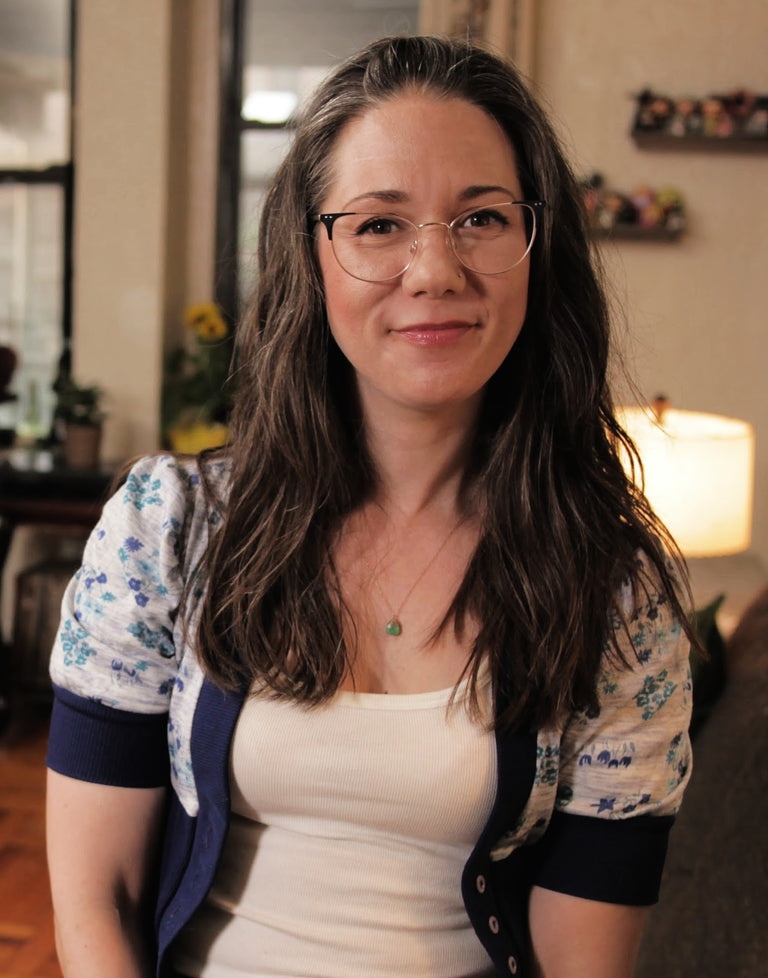If you’ve ever experienced hair loss, how long it would take for your hair to grow back was probably at the top of your mind.
The truth is that hair loss and hair growth arise from complex bodily systems and depend upon a variety of factors. Read on to understand hair growth cycles and how your efforts to get back to healthy growth might be impacted, along with expert tips on what you should actually be doing to encourage thicker, looking fuller hair.
#include-related-slider#
How Fast Does Hair Typically Grow?
Under normal conditions, the World Trichology Society reports that hair grows about a half-inch (1.2cm) per month. This means that you could grow about 6 inches (15.24cm) of hair per year. But this varies from person to person, with some people naturally growing hair more quickly and others more slowly.
On top of that, lots of other variables can impact how quickly your hair grows. Age, genetics, hormones, diet, stress, medical conditions, medications and even the season can all impact how (and if) your hair grows back, along with how quickly this growth happens. Over the course of a lifetime, your hair growth rates will change along with the ever-changing state of your body and the dynamic physiology that supports hair growth.
Shop: The Best-Selling Thinning Hair Products
How Long Does It Take for Hair to Grow Back?
In short: it depends. Here are a few of the most common scenarios that can cause hair loss and how quickly hair might regrow.
Shaving and Waxing
Lathering up with shaving cream and using a razor only removes the hair shaft present above the skin. Beneath the skin, the hair follicles and hair roots are unaffected, and you might see visible hair after a few hours! It’s a common myth that shaving makes hair grow back thicker and fuller. In fact, since hairs naturally have a tapered end, it’s just the blunted shaved edge of the hair shaft that makes it more visible.
Waxing, on the other hand, pulls the hair shaft out by the root. This causes damage to the follicle, and it generally takes two to three weeks to repair and grow a new shaft long enough for you to see. While more research is needed, it’s commonly accepted that over the long term, repeated waxing can permanently damage follicles and hair growth can stop altogether.
Genetics
Genetics can affect hair growth in a number of ways. One of the most common ways genetics has been linked to hair loss and regrowth is in hereditary hair loss, also known as male pattern hair loss, female pattern hair loss and androgenetic alopecia.
With female and male pattern baldness, it is believed that genetics can make hair follicles become highly sensitive to a group of hormones called androgens. Over time this causes the follicles to shrink, produce finer hair, and eventually stop growing hair altogether. While there is no way to cure or stop androgenetic alopecia, steps can be taken to slow its progression and even encourage moderate hair regrowth.
Uncover: What Is Androgenetic Alopecia?
Stress
Stress can be thought of in a number of ways. Sure, we all know the external stressors that can come with demanding jobs, major life changes or the loss of a loved one. But stressors can also be internal, caused by disruptions to the balanced physiological flow our bodies are trying to maintain. Think severe illnesses like the flu or COVID-19, a sudden change to hormones caused by birth control or childbirth, or a new medication.
Sudden bouts of stress can cause a form of hair loss called telogen effluvium, where a disproportionate number of hairs are prematurely forced into the telogen phase. Usually, this form of hair loss is totally reversible, and folks typically get back to normal hair growth within a few months. However, if the source of stress isn’t resolved, it can slow or impede healthy hair regrowth.
Age
Hair texture, color, thickness and density are all impacted by age. As your body and hair follicles get older, growth slows, and some follicles might stop producing hair altogether. Hormonal changes that come along with aging (like menopause) can also impact hair growth. About 40% of women and 50% of men will experience some hair loss by age 50, and these numbers only increase with age.
Nutrition
Nutrition can have a major impact on follicles. Your hair follicles depend on a variety of vitamins, minerals and protein to not only function properly but to build your hair shaft, cell by cell. Dieting, extreme changes to your diet, or an imbalanced diet can all directly impact the quality and density of hair, along with slowing the rate of growth. Regrowing lost hair due to nutrition deficiencies can take a few months or longer than a year.
Shop: HYDR-8 Essentials Kit
Underlying Conditions
A wide variety of medical conditions have been linked to hair loss. Scalp psoriasis, alopecia areata, lupus and rheumatoid arthritis are common autoimmune conditions that can contribute to or even cause hair loss. Graves’ and Hashimoto’s disease are two thyroid conditions that have been associated with hair loss, and this list is by no means exhaustive.
While some medical conditions can lead to permanent hair loss, often treating the underlying condition improves if not totally reverses hair loss.
Find Out: 7 Autoimmune Conditions That Might Cause Hair Loss
Chemotherapy
Chemotherapy is used to treat cancer, and these treatments use a class of drugs designed to target rapidly dividing cells, like cancer cells. Unfortunately, the cells produced by our hair follicles to create each strand of hair are also rapidly dividing, which is why chemotherapy is known to induce hair loss.
Hair growth often resumes within a few weeks of ending chemotherapy, with new hair growth starting off with a fine, wispy peach fuzz and growing in thicker and fuller over time. Folks who undergo chemotherapy often see color and texture changes in their hair, which also resolves over time.
How Can I Help Support Hair Regrowth?
As a first step, consult with a doctor to understand the root cause of your hair loss.
“If you notice thinning hair or hair loss or any other unusual change in your hair, reach out to a dermatologist as soon as possible,” advised Dr. Charu Sharma, Director of Dermatology at CureSkin. “They can examine your scalp and give you a detailed analysis of the cause along with treatment options."
While you can’t always control the factors influencing how quickly your hair grows back, the good news is that there are a variety of tools at your disposal that can support hair health and your body’s ability to promote hair growth.
Use a Hair Serum
Use a hair serum with natural, vegan ingredients, such as GRO Hair Serum, which supports the appearance of visibly thicker, fuller looking hair. It can:
- Reduces signs of shedding by up to 85%*
- Increase the appearance of hair density by up to 56%*
*Based on a 120-day independent, third-party clinical study with 40 participants using GRO Hair Serum once daily.
Manage Stress
Stress management has become more important than ever when it comes to hair health. There are lots of activities that have been shown to reduce stress, such as yoga and meditation. But you can also relieve stress by spending time outside, laughing with friends and getting plenty of sleep.
Want to get some extra bang for your zen buck? “Use a scalp massage or treatment at least once a week to stimulate blood flow to the scalp, encouraging hair growth,” said Laura Roncagli, senior beauty editor at My Beautik.
Adding our GRO Revitalizing Scalp Massager to your routine is also a great way to work in the active ingredients from hair serums and scalp treatments and stimulate blood flow to your scalp.
Eat a Healthy and Balanced Diet
Eating a balanced, varied and healthy diet is the best way to provide your body with the building blocks it needs to grow hair.
“If you’re trying to regrow hair, you can help the process by eating a diet that is rich in omega-6 fatty acids, zinc, iron, folic acid and biotin,” said Dr. Jae Pak, medical doctor and hair loss specialist with Jae Pak Medical.
Take Care of the Hair You Have
Taking special care of your scalp and follicles is an important part of your regrowth efforts.
Give your scalp a break by avoiding tight hairstyles, heat styling and chemical treatments as much as possible. Be gentle when dealing with your hair, which means using a comb instead of a brush on wet hair.
“Use gentle hair care products to avoid skin irritation,” said Dr. Tabitha Cranie, a family physician with the National Wellness & Public Health Network. “Avoiding products that contain sulfates, alcohol or fragrances may help improve your scalp health."
VEGAMOUR’s GRO Revitalizing Shampoo and Conditioner Kit is packed with beneficial phyto-actives that support scalp health in 100% vegan, all-natural formulations that are formulated without sulfates, silicones, parabens, gluten and artificial fragrances.
#include-related-slider#
The Takeaway
On average, hair grows about half-inch per month, but can vary from person to person and changes over time. Hair growth is also impacted by a variety of factors, some of which might not be in your control. If you’ve noticed increased hair shedding or hair thinning, speak with a doctor. The best way to treat hair shedding and loss is by addressing the underlying cause. Encourage optimal growth by taking care of your health, eating a well-balanced diet and making supportive changes to your hair care routine.
More From VEGAMOUR
- Mature Hairline vs. Receding Hairline — What's the Difference?
- What Causes Sudden Hair Loss?
- How Often Should You Wash Thinning Hair?
Photo credit: Lili Kovac/Unsplash
Back



















